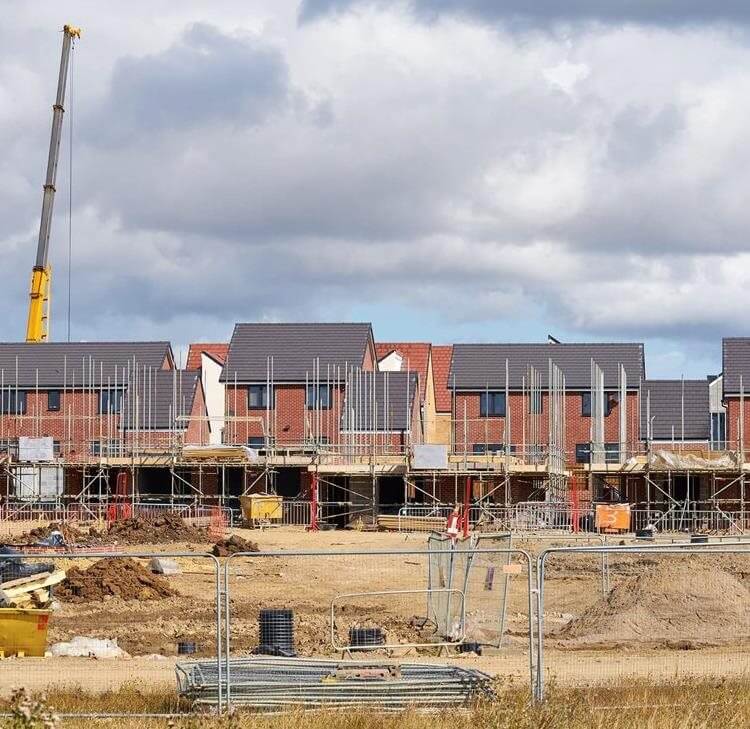Overage clauses and drafting issues
In this article we are going to review the main elements of agreeing overage agreements that local authorities need to take into account when agreeing overage terms.
What is an overage?
First things first, what is an overage agreement? It is essentially a contractual obligation on a party buying land (the developer) to make a further payment to the seller when a certain trigger event happens. This is a useful tool to use when negotiating for the sale of land that is undeveloped and that is being purchased for potential development by a developer, but: (a) the developer does not yet know what development will take place or the extent of it; and/or (b) the developer wants to spread their payments out and not pay the full potential land value up front.
From the point of view of public bodies, this could be useful in complying with s.123 obligations or general obligations to obtain best value if there is any impasse with a developer in negotiating a price for any of the reasons stated above. It can also protect against the risk of embarrassment should the developer achieve a significant profit from quickly re-selling the land or constructing a more valuable development than anticipated at the time of purchase.
Type of agreement
There are a number of ways that an overage payment can be secured by a seller. As stated above, the requirement to pay is a contractual one agreed between the two parties. But, if you rely purely on the contractual obligation without any security, there is a risk of being unable to recover payment in the event of a breach. This is particularly the case if the developer being contracted with is a special purpose vehicle (SPV) with few assets to pursue.
Protection by legal charge on the title being sold is one method of protection, but this is often resisted by developers. Any funder of the development is likely to want a first legal charge on the property being developed so use of a legal charge to protect an overage agreement might render a site difficult to develop.
Local authorities should also be exercise caution before seeking to utilise restrictive covenants or ransom strips as another method of protecting an overage payment. The use of a restrictive covenant requires some retained land that benefits from the restrictive covenant. Otherwise, the restrictive covenant will be unenforceable. The case of Cosmichome Limited v Southampton City Council [2013] EWHC1378 also makes clear that a restrictive covenant cannot be used as a way of securing a positive payment, because the purpose of a restrictive covenant is to restrict certain behaviours. A ransom strip would require careful monitoring to ensure that prescriptive rights do not develop over time and, in itself, the retention of a ransom strip without any background agreement dealing with future payments will not protect payment or ensure that best consideration is achieved on the sale of the original site.
The most common method of protecting an overage is by way of a positive covenant in a contract protected by a restriction on title. This prevents the property from being disposed of by a purchaser without the consent of the beneficiary under the overage agreement – in this case, the local authority. A positive obligation in the contract would also require that the restriction is removed, or consent is provided, upon payment being made. We will therefore consider the drafting issues arising from this type agreement in the remainder of this article.
Trigger events
Whilst the length of term for the overage agreement and the overage percentage (i.e. the percentage of any increase in value that will be payable to the beneficiary) are the headline points that everyone looks out for, there are a number of other key terms that need to be agreed that are of equal importance.
The first of these is the trigger event -the event that has to occur to trigger the requirement on the developer to make the overage payment.
Common trigger events for overage agreements include the implementation of a planning permission or sale of the land with the benefit of a new planning permission by the developer, both of which are relevant where the overage agreement is specifically trying to extract an additional payment in connection with a development. The date of granting a planning permission is one that the seller might want to agree, but this is likely to be resisted by the developer on the basis that the date of obtaining the planning permission is not necessarily the same date that they decide to proceed with the development. Moreover, it will not be the date on which they actually realise the increase in value. It is only when the developer has begun actual implementation works that it is likely to have its funding in place, and when it sells the land on to a third party that there will actually be cash available to pay the overage.
However, if the local authority’s main concern is to ensure that it has not sold the land at an undervalue and is not going to be embarrassed by the purchaser ‘flipping’ the land on at a profit very soon after completion of a sale, then it will be important to ensure that disposal of the land (with or without planning permission) is an a trigger event for paying overage.
Where a landowner is selling land to an SPV for development, then you will also want to consider another trigger: the change of control of the company or sale of a certain percentage of shares in the SPV to a third party. This helps to avoid the risk of the developer simply selling the shares in the company, rather than transferring the land and thereby avoiding the overage payment, although this is more difficult to monitor as a Land Registry restriction will not prevent the sale of shares.
Planning permission and relevant development
Where the overage agreement makes reference to ‘planning permission’, care needs to be taken in defining what that constitutes “planning permission”. For instance, is outline permission sufficient? Or does a developer need to obtain a detailed planning permission? What about works done pursuant to permitted development rights where no application is actually made for permission?
A further relevant question is who needs to make the planning application in order for it to be a planning permission relevant for overage? In Microdesign Group Limited v BDW Trading Limited [2008] the party benefitting from an overage payment applied for planning permission in order to try to inflate the value and therefore the overage payment. Although the contract was silent on who must apply for a planning permission for it to trigger the overage agreement, the court held in favour of the developer. Accordingly, the overage was calculated on the basis of the developer’s planning permission, rather than the beneficiary’s planning permission. This seems fair, but highlights how careful thought and drafting will help to avoid uncertainty and unnecessary litigation.
Being specific about what type of development triggers overage is also important. T can be by reference to a specific type of development, or by reference to all types of development but excluding certain permitted developments. Referencing a development pursuant to an existing planning permission would also be helpful in ensuring clarity. Reference to the Use Classes Order is also a common way of identifying types of development that trigger, or are permitted by, an overage agreement.
The case of Harris v Berkeley Strategic Land Limited [2014] EWHC 3355 offers a perfect example of a lack of sufficient detail in the drafting of an overage agreement. In this case, overage would be triggered by development of ‘residential accommodation’ (amongst other types of development) on land sold to the developer. There was an argument over whether 60 flats in a care home development were ‘residential accommodation’ within the relevant definition in the overage agreement. The developer defending the claim argued that the 60 units were Use Class C2 residential ‘institutions’ - and so this was not a development that would trigger the requirement to pay the overage. The court held that, even if there was a planning distinction between C2 and C3 developments, the development was one that involved units of residential accommodation and so was caught by the overage agreement. The overage agreement did not specify that a development had to be C3 (i.e. what might be commonly considered to be residential development rather than a care home development) but referred more generically to residential accommodation. This case provides a perfect warning of why simply saying ‘residential development’ as being a trigger is not sufficient and more thought should be put into what is actually intended.
Type of disposals
A common trigger for payment of overage is the disposal of the relevant land with the benefit of a new planning permission. Again, it can appear to be a case of referring simply to disposals, but careful thought needs to be applied to those categories of disposal which are relevant, and what the impact of that disposal is on the overage agreement.
The obvious trigger for overage is a sale or transfer of the whole or part/plots with the benefit of planning permission.
However, some thought should also be given to what happens if a lease is granted. A distinction may need to be applied between long term leases granted for a premium, and shorter term leases granted at a market rent. Developers may wish to exclude the latter, but sellers would want to include the former to ensure that a buyer cannot avoid the overage payment by granting a long lease for a premium and then the long tenant carrying out the development instead.
Developers would also want to exclude the grant of easements, leases or transfers to utility providers as typically these will be for no value but would also be necessary as part of the wider development.
The grant of mortgages or charges to lenders is another typical exception requested by developers, as lenders are unlikely to enter into the necessary deed of covenant confirming they will be bound by the overage. When drafting the agreement, you should ensure that any disposals by a lender exercising the power of sale trigger the overage so that restrictions should reflect this.
In addition, consideration should be made of whether the overage falls away once a disposal has been made, and any overage payment has been paid, or whether the overage should bind the land for the duration of the overage agreement. In the latter case, there could be multiple triggers down the line for subsequent developments and, unsurprisingly, this is an option that developers do not favour. However, if the overage is a one-time only trigger, then there is a risk of a developer pursuing a ‘soft’ application that does not result in a significant increase in value, settling the overage liability and then applying for and obtaining more valuable planning permission and avoiding any further payment to the beneficiary.
Market value or revenue linked?
Once it is established that overage has been triggered by a developer and that a payment is due, the level of payment must be calculated. In higher value disposals, this is where a significant portion of the negotiations are likely to take place and expert advice should be obtained to ensure that the maximum value (or simply a fair value) is extracted from the developer.
It is quite common to link the payment to the increase in the market value to the property resulting from the relevant trigger event. The parties would agree to value the property as at the date that the overage payment is triggered, once with the benefit of the planning permission, once without the benefit of the planning permission, and the difference in the two values used for the purpose of calculating the overage payment. An alternative mechanism is for a payment to be made by reference to profit or revenue received by a developer due to carrying out the development. In either case there is a need for co-operation between the parties – whether in agreeing the valuation of the land or reviewing the developer’s accounts in order to agree the overage payment. It is therefore essential that an adequate dispute resolution clause is inserted into the contract to deal with situations where there the parties cannot agree.
There is also likely to be extensive debate about the development costs that can be deducted before the overage payment is made. It is not unreasonable for certain costs to be deducted, as a developer incurs them to achieve the increased value or the revenue that the previous landowner is seeking to benefit from. However, careful thought needs to be placed on those costs that can be deducted, and who determines those costs. If a developer is given free rein to deduct any costs at its discretion, then there is a risk that some costs are included that were not essential to achieve the increased value. Therefore, a mechanism should be agreed that gives the benefiting party the ability to either cap or approve eligible costs, review accounts and invoices to ensure validity of costs, or at least ensure that only ‘reasonable and properly incurred’ costs are factored in to the calculation.
Great care needs to be taken over any formulae used in calculating the eventual payment, particularly on larger development where there are a number of factors taken into account when calculating the overage. Again, there is case law that can identify the risks here, with the case of George Wimpey UK Ltd v VI Components Ltd [2005] EWCA Civ 77. In this case the overage formula was so complicated that no one noticed when part of the formula was missed off on the twelfth round of negotiations, which resulted in an unexpected windfall for the seller.
Summary
There is certainly no such thing as a one-size fits all overage agreement and so adequate time and thought needs to be applied to negotiations of all parts of the overage, not just the payment percentage. Other key elements of an agreement to be considered:
- how is the overage going to be protected? A restriction should be placed on the title to prevent sales without consent being required
- what type of development will trigger the requirement to make an overage payment and are both parties clear on the specifics of this?
- what type of disposals of the land will trigger the requirement to make an overage payment? It may be that certain disposals are to be permitted without triggering the payment requirements, such as to utilities providers or highways agency
- how is the payment calculated? Reference to a surveyor to calculate the increase in the land value or an accountant to review the income and expenditure accounts kept by the developer might be necessary
- is the formula accurate? Work it through using different figures to ensure you get the outcome you want.
Particularly in the case of more complicated overage agreements, it is worth getting advice from land agents, valuers and solicitors during the heads of terms stage to ensure all issues are covered off early on, rather than during the drafting of the documents, which can cause delays later on in the deal.









































